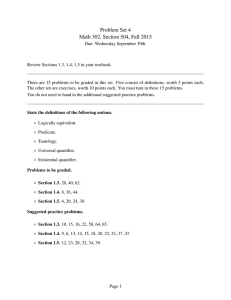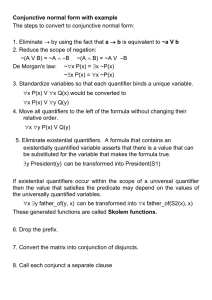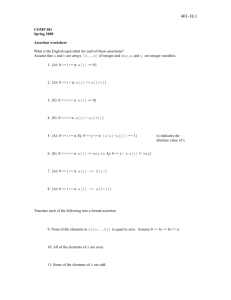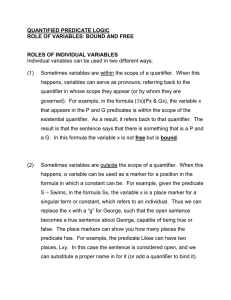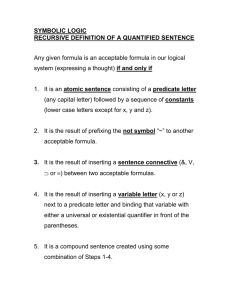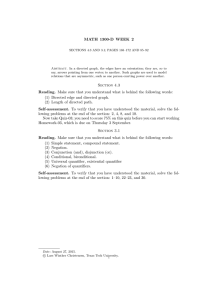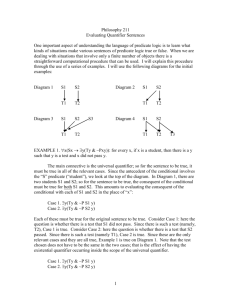Instantiate Multiply Quantified Sentences
advertisement
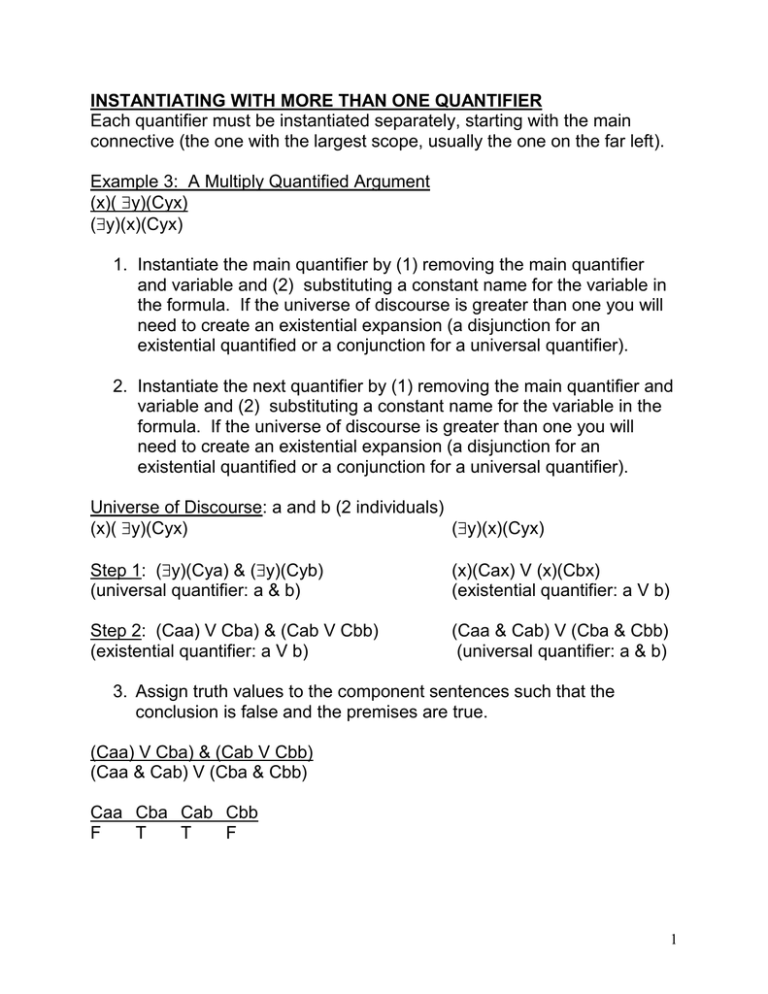
INSTANTIATING WITH MORE THAN ONE QUANTIFIER Each quantifier must be instantiated separately, starting with the main connective (the one with the largest scope, usually the one on the far left). Example 3: A Multiply Quantified Argument (x)( y)(Cyx) (y)(x)(Cyx) 1. Instantiate the main quantifier by (1) removing the main quantifier and variable and (2) substituting a constant name for the variable in the formula. If the universe of discourse is greater than one you will need to create an existential expansion (a disjunction for an existential quantified or a conjunction for a universal quantifier). 2. Instantiate the next quantifier by (1) removing the main quantifier and variable and (2) substituting a constant name for the variable in the formula. If the universe of discourse is greater than one you will need to create an existential expansion (a disjunction for an existential quantified or a conjunction for a universal quantifier). Universe of Discourse: a and b (2 individuals) (x)( y)(Cyx) (y)(x)(Cyx) Step 1: (y)(Cya) & (y)(Cyb) (universal quantifier: a & b) (x)(Cax) V (x)(Cbx) (existential quantifier: a V b) Step 2: (Caa) V Cba) & (Cab V Cbb) (existential quantifier: a V b) (Caa & Cab) V (Cba & Cbb) (universal quantifier: a & b) 3. Assign truth values to the component sentences such that the conclusion is false and the premises are true. (Caa) V Cba) & (Cab V Cbb) (Caa & Cab) V (Cba & Cbb) Caa Cba Cab Cbb F T T F 1
